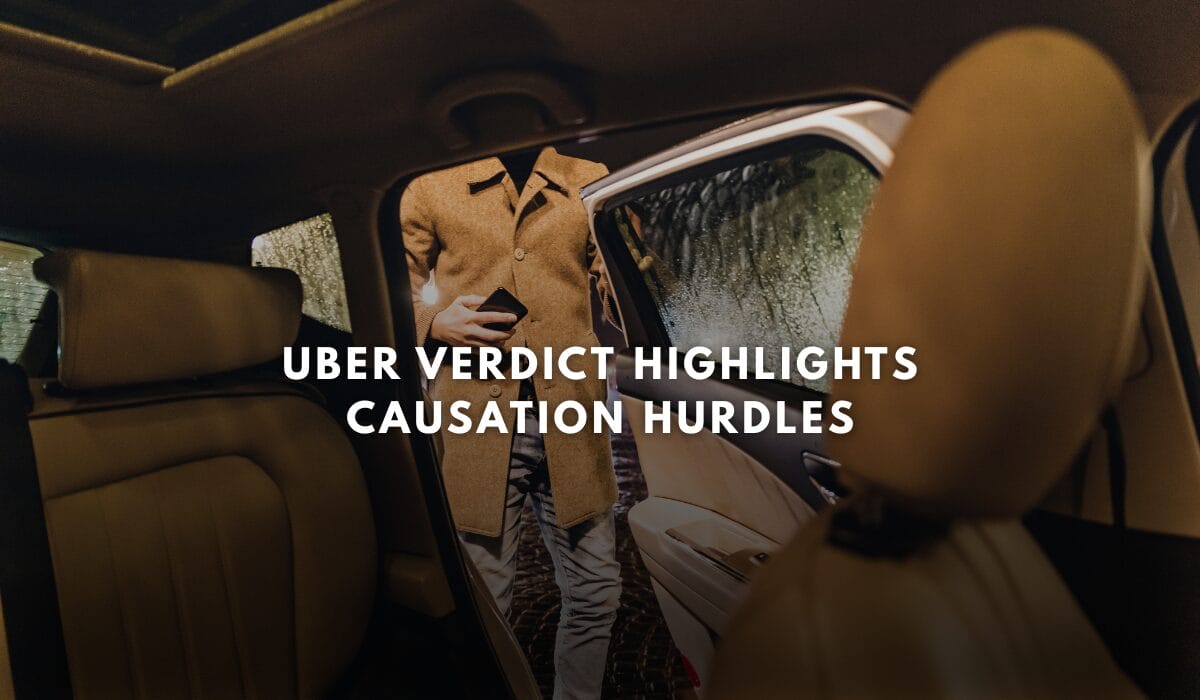A recent California verdict involving Uber is drawing national attention, not because the jury cleared the company of wrongdoing, but because it found negligence without liability. The outcome reveals a strategic inflection point for law firms pursuing claims against powerful corporate defendants: causation, not negligence, often decides the case.
Jury’s Dilemma: What Counts as a “Substantial Factor”
During two days of deliberations, jurors submitted a pivotal question to the judge: What exactly does it mean for something to be a “substantial factor” in causing harm?
The judge, relying on California’s standard civil jury instructions, clarified that the plaintiff needed to prove her injuries would not have occurred without Uber’s conduct.
This exchange exposed the heart of the jurors’ uncertainty. They were not grappling with whether Uber acted negligently, the jury agreed it had, but rather whether its negligence was the legal cause of the assault and resulting trauma.
The Verdict: Negligence Proven, Liability Denied
The case involved the 2016 sexual assault of an 18-year-old student by an Uber driver. The jury determined that Uber was negligent but concluded that its conduct was not a substantial factor in causing the harm.
That single finding shielded Uber from financial responsibility, despite a clear acknowledgment that the company failed to meet its duty of care.
In practice, this reflects a common dynamic in corporate accountability litigation: juries may recognize systemic failures but stop short of attributing those failures as the direct cause of harm.
Why Causation Is the Real Battlefield
For plaintiff firms, this case underscores a sobering truth. Proving negligence sets the stage, but proving causation wins the verdict.
Causation in complex tort cases, particularly those involving assaults facilitated by platforms, institutions, or third parties, is rarely straightforward. It requires a strategic evidentiary bridge that connects policy failures or systemic negligence to the harm suffered by the victim.
Without that bridge, even strong negligence claims can falter at the finish line, as they did here.
Strategic Implications for Law Firms
This verdict should not be read as a victory for Uber alone. It also highlights a critical opportunity for plaintiff attorneys to rethink how causation is argued, documented, and presented at trial.
Key takeaways for litigators include:
- Clarify the causal chain early. Jurors need to understand how each negligent act links directly to the injury.
- Use expert testimony strategically. Expert analysis can help make abstract corporate failures feel immediate and consequential.
- Frame causation as inevitable, not incidental. Show that the harm was the foreseeable result of the defendant’s choices, not a distant or unforeseeable event.
When the negligence is clear, but the jury hesitates on causation, the narrative, not the evidence, is often what’s missing.
Call to Action: Strengthen Your Causation Strategy
At Blue Sky Legal, we help law firms close the gap between negligence and liability. Our team works with plaintiff attorneys to:
- Develop robust causation frameworks
- Craft persuasive trial narratives
- Prepare expert testimony that resonates with jurors
- Strengthen evidentiary chains in complex tort and assault cases
Partner with Blue Sky Legal to build the causation strategy your case deserves, and turn negligence findings into real accountability.
Contact Us Today!


